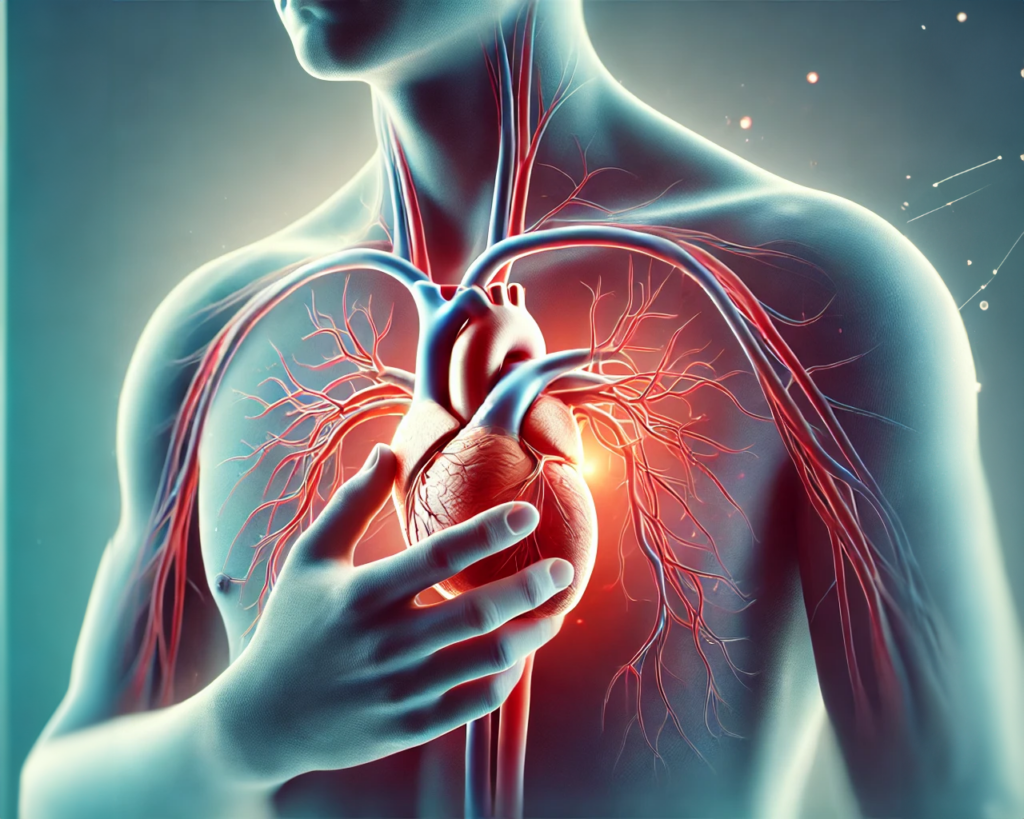💊What is Angina?
Angina is a type of chest pain caused by reduced blood flow to the heart muscle. It’s often described as a squeezing, pressure-like pain or discomfort in the chest, but it can also be felt in the shoulders, arms, neck, jaw, or back. Angina typically indicates an underlying heart condition, most commonly coronary artery disease (CAD). CAD occurs when the arteries supplying blood to the heart become narrowed or blocked by plaque buildup, which reduces blood flow and oxygen delivery to the heart muscle.
What Factors Lead to Angina?
Several factors can lead to the development of angina:
- Atherosclerosis: The buildup of fatty deposits (plaque) in the arteries is the primary cause of CAD and angina.
- Hypertension: High blood pressure can damage arteries over time, making them more susceptible to plaque buildup.
- Smoking: Tobacco use accelerates atherosclerosis and constricts blood vessels, increasing the risk of angina.
- Diabetes: High blood sugar levels contribute to arterial damage and plaque formation.
- High Cholesterol: Elevated levels of LDL cholesterol can lead to plaque deposits in the arteries, restricting blood flow.
- Obesity: Excess weight puts additional strain on the heart and increases the likelihood of developing CAD.
- Sedentary Lifestyle: Lack of physical activity can contribute to obesity, high blood pressure, and high cholesterol, all of which are risk factors for angina.
Types of Angina
- Stable Angina: This type occurs predictably with physical exertion or emotional stress and typically resolves with rest or medication. It reflects a chronic condition where the heart’s blood supply is consistently reduced but not completely blocked.
- Unstable Angina: This more severe form occurs suddenly, often at rest or with minimal exertion, and may not respond well to rest or medication. Unstable angina is a medical emergency and can signal an impending heart attack, as it often indicates a sudden and significant blockage in a coronary artery.
🤔 Why you need to know:
Understanding angina is crucial because it’s a warning sign that your heart isn’t getting enough oxygen. Recognizing and managing angina can help prevent a heart attack. Here are some practical steps:
- Monitor Symptoms: Pay attention to chest pain or discomfort, especially if it occurs during physical activity or stress.
- Lifestyle Changes: Improve your heart health by quitting smoking, eating a heart-healthy diet, and engaging in regular physical activity.
- Seek Medical Help: If you experience angina, consult with a healthcare professional to manage your condition and reduce the risk of complications.
🧠 Trivia:
The word “angina” comes from the Latin term “angere,” meaning “to choke”. This reflects the choking or constricting feeling often associated with angina pain. The condition has been recognized since ancient times, with descriptions dating back to Hippocrates.



